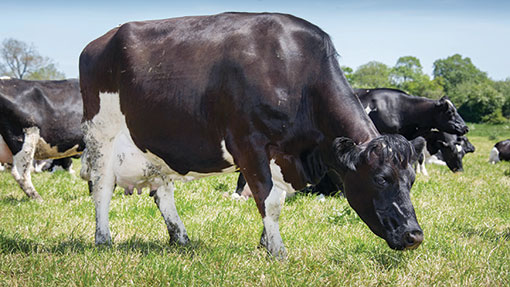Half of dairy herds not tested for BVD in past year

More work is needed in helping farmers tackle bovine viral diarrhoea (BVD) in cattle with up to half of farmers admitting they hadn’t tested their herd in the last 12 months, according to a new survey.
Farmers also had an inconsistent approach to tackling this costly disease, which will hinder efforts to eradicate the disease, say experts.
The Farming Against BVD survey results were unveiled earlier this week, covering 301 dairy and beef farmers in England and Wales.
“BVD is a serious, industry wide problem and one that farmers are clearly aware of, with over 70% of respondents having a herd health plan that incorporated BVD,” said James Russell from independent vets McMurtry and Harding.
“However, the survey reinforced that much work needs to be done in providing practical advice about how farmers tackle the virus in their herds.
“What is deeply concerning is that 49% of farmers questioned had not tested their herd for BVD in the last 12 months and of those that did, 83% did not go on to test their youngstock.
“So whilst farmers may be aware of BVD, there appears, on this evidence, to be a disconnect between awareness and practical activity in the detection and then eradication of infection from their herd.”
Persistent infection problem
One of the most significant findings of the report was the attitude of farmers towards testing and subsequent failure to identify persistently infected (PI) livestock within their herd.
Any calf born from a BVD persistently infected cow will be born persistently infected with the virus and cannot be cured. As a result, future vaccination of this animal against the virus is rendered ineffective and the affected animal will be a source of the virus, spreading infection within the herd.
With young cattle being the source of PIs and reservoirs of infection within a herd, failure to test, identify and then deal with PI livestock represents the most significant problem facing the industry when trying to eradicate BVD.
Joe Brownlie from the Royal Veterinary College and current chairman of the BVD Scientific and Technical Working Group is concerned that 39% of farmers who found BVD present in their herd did not then go on to test for PIs.
“Of the 61% of farmers that did do follow up tests for PIs once BVD had been detected in their herd, one third found one or more PIs within the stock holding.
“However, one third of farmers who identified having active BVD infection in their herd then failed to go on and carry out individual animal testing; of those that did, nearly half discovered one or more individual PIs within their herd.
“It just shows that the disease can be hidden,” said Prof Brownlie. “Farmers could be in the dangerous position of potentially missing PI animals that are in their herd.”
PIs that can continue to spread the BVD virus among other cattle and pass on their PI status to any calves they produce. It is hugely important to be thorough and consistent in your testing as part of an agreed herd health plan.
Dealing with PIs
The survey also indicates that action needs to be taken to educate farmers about what to do once BVD and, most significantly, PIs are discovered among a herd.
“There is much evidence from this survey to encourage the industry in how it is tackling this disease,” said Prof Brownlie. “However, there is still a great need for clear direction.
The survey indicated that 20% of farmers wrongly believe that PI animal’s will eventually become non-infective and that 25% believe that calves born of PI cows will not always have PI calves themselves.
“All of these perceptions are incorrect and can lead to reservoirs of the disease being allowed to remain not only within individual herds, but geographical regions as well, seriously hindering the eradication of the virus in England and Wales.”
The survey was by the Farming Against BVD initiative by Novartis Animal Health in conjunction with the Royal Veterinary College and independent vets McMurtry and Harding.
